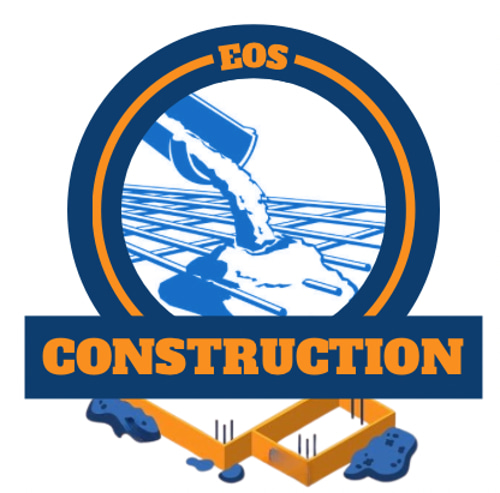CALL US TODAY! → (407) 782-4637
From Garages to Additions: The Power of a Solid Concrete Slab
Every great structure needs a strong base. Discover how EOS pours level, reinforced concrete slabs for a wide range of residential projects.
3/16/20254 min read


The Importance of a Solid Foundation
A solid foundation is paramount in any construction project, serving as the backbone that supports the entire structure above it. In particular, a concrete slab plays a critical role in maintaining stability and support, making it essential for installations like garages, sheds, and even additional rooms. The reliability of these spaces greatly enhances when established upon a durable concrete base, which is engineered specifically to withstand various environmental pressures. Without a well-constructed slab, the risks of conducting repairs due to structural deficiencies increase significantly.
Concrete slabs provide a strong, flat surface that effectively distributes the weight of the structure above it. This foundation helps to eliminate common problems such as cracking or settling which can lead to more serious complications over time. When a concrete slab is laid properly, it mitigates the risks of uneven flooring and potential structural failures, contributing to overall safety in the building. Furthermore, the durability and longevity of concrete ensure that it can endure different weather conditions without quickly deteriorating, allowing structures to remain intact for years.
Inadequate or poorly designed foundations can lead to issues such as moisture infiltration, which may cause mold and mildew, along with damage to the overall integrity of the structure. A solid concrete slab, conversely, acts as a barrier against these elements, promoting a healthier living environment. Therefore, investing in quality concrete installation should be a priority for homeowners looking to expand or enhance their properties. By prioritizing a solid foundation, the life expectancy of the building is extended while simultaneously minimizing future maintenance and repair costs. This proactive approach is both economically and structurally sound.
EOS Construction’s Grading Process
At EOS Construction, the grading process plays a pivotal role in ensuring the integrity and longevity of a concrete slab. A well-prepared site begins with careful inspection and evaluation of the existing ground conditions. The first step involves clearing the area of any vegetation, debris, and loose soil, which can hinder the grading process and lead to future complications. Once cleared, the team assesses the natural contour of the land, identifying any potential issues such as low spots or slopes that could affect drainage.
Following the initial assessment, the grading starts by utilizing specialized equipment to achieve the desired elevation and slope. This step is crucial as it ensures that the surface remains level and promotes proper drainage away from the slab. A well-graded site also minimizes the risk of water accumulation that can lead to erosion or deterioration of the concrete. The EOS Construction team meticulously checks for consistent elevation, typically utilizing a laser level for precision, which helps in achieving an even surface essential for a robust foundation.
After establishing the grade, the next step involves compacting the soil to provide a solid base for the concrete slab. This compaction process eliminates air pockets and enhances the stability of the ground. It is vital to ensure that the soil is compacted to the appropriate density, as any discrepancies can lead to settling issues over time. Finally, the team prepares for a gravel base, which aids in additional drainage while providing a further level of support for the concrete slab. This systematic grading process not only prepares the site effectively for construction but lays the groundwork for a stable foundation that can withstand the test of time.
Building the Base: Gravel and Rebar Placement
A solid concrete slab is essential for structural integrity, and its composition plays a significant role in ensuring long-lasting performance. The process begins with the selection of the appropriate gravel, which serves as the foundational base for the slab. Choosing the right type of gravel is critical; it should be washed and free of debris, ensuring optimal drainage and stability. Typically, a mix of coarse and fine gravel is recommended for providing adequate support. The depth of the gravel layer is also vital. It is generally advised to have at least 4 to 6 inches of gravel beneath the slab to facilitate effective drainage, thereby preventing water accumulation which could lead to structural damage over time.
Once the gravel is correctly laid and compacted, the next step involves the strategic placement of rebar, which enhances the slab's strength and durability. Reinforcing bars (rebar) are typically placed in a grid-like pattern within the slab's concrete mix. This reinforcement helps to absorb tensile and shear forces, minimizing the potential for cracking and settlement. A common recommendation is to use #4 rebar, spaced approximately 16 inches apart, although specific requirements may vary based on local building codes and the expected load on the slab.
Prior to pouring the concrete, ensuring that the gravel base is level and compacted is crucial, as any unevenness may lead to future complications. The placement of rebar should be conducted carefully to avoid contact with the ground or the edge of the formwork; this positioning allows for optimal coverage by the concrete, safeguarding against corrosion. Ultimately, the combination of a well-prepared gravel base and correctly installed rebar significantly contributes to the overall durability and reliability of the concrete slab, setting a strong foundation for future structural endeavors.
Surface Finishing: The Final Touch for Durability
Concrete slabs are not only celebrated for their strength and versatility but also for the vast array of surface finishing techniques that can enhance both their functionality and aesthetic appeal. Surface finishing is a critical aspect that contributes to the longevity and effectiveness of a concrete slab, ensuring it meets the needs of various applications, from residential garages to commercial buildings.
One popular method of surface finishing is polishing. This technique involves mechanically grinding the concrete to achieve a glossy, smooth surface that not only looks visually appealing but also offers practicality. Polished concrete is highly resistant to stains and moisture, making it an excellent choice for areas prone to spills or heavy foot traffic. The reflectivity of a polished surface can also enhance lighting in a space, reducing the need for additional lighting installations.
Staining is yet another widely used option for surface finishing. This method involves applying a chemical stain to the slab, which penetrates the surface to create a rich, colored finish. Not only does staining enhance the aesthetic of the concrete zone, but it also offers protection against UV rays and water infiltration, thus improving the slab's durability. The choice of finish can greatly influence the overall characterization and performance of a concrete slab, reinforcing the importance of selecting the right method for the intended application.
Through these various surface finishing techniques—polishing and staining—homeowners and contractors can effectively elevate the lifespan and utility of concrete slabs while seamlessly integrating their aesthetic visions.
EMAIL:
FOLLOW US ON SOCIAL MEDIA
SUBSCRIBE TO OUR NEWSLETTER
CALL:
HOURS:
Mon-Sat
7:00am-5:00pm
COPYRIGHT © 2025 EOS CONSTRUCTION LLC.




